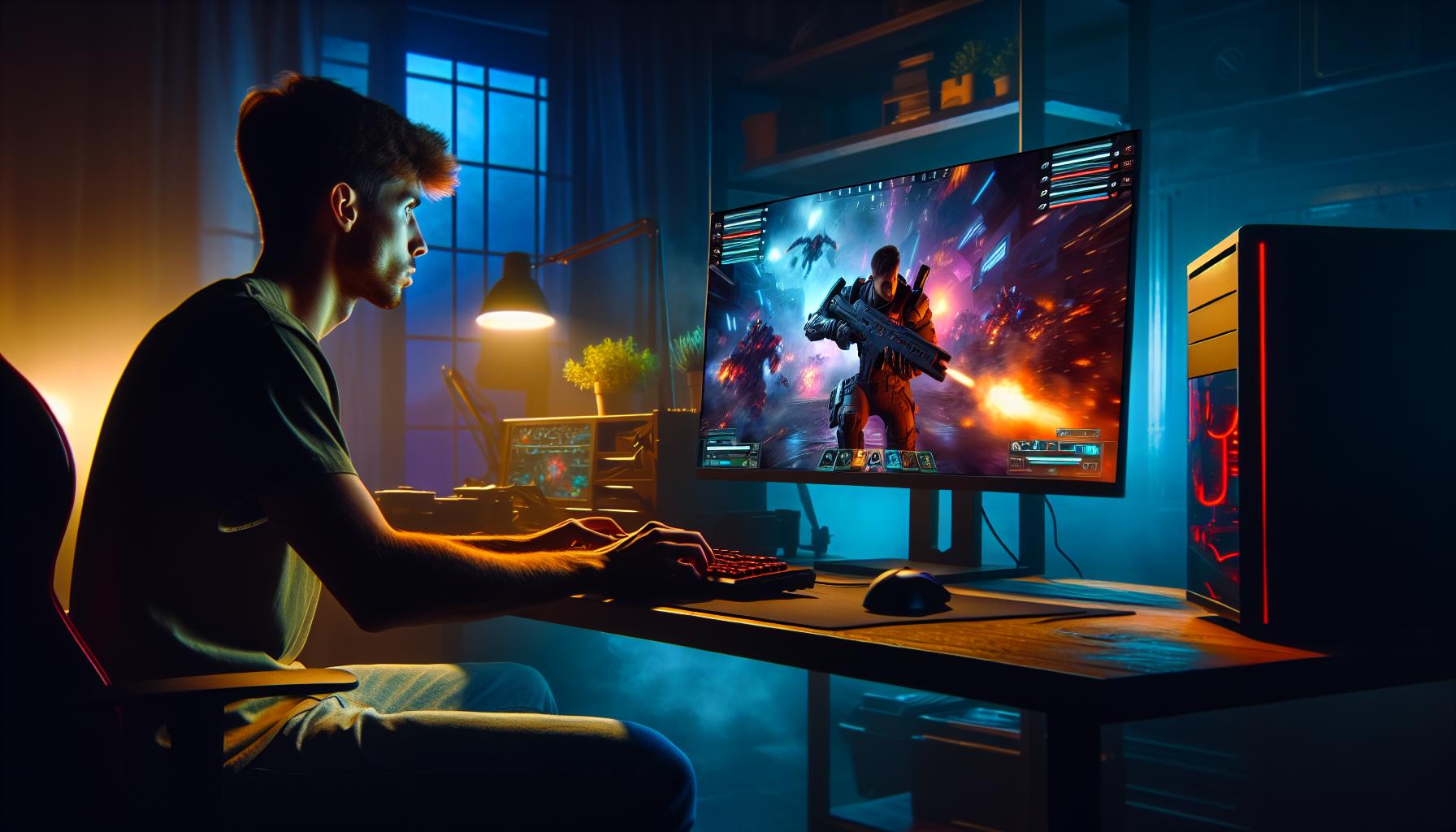The infamous jiesnielcasizom2008 puzzle has left gamers scratching their heads and questioning their sanity for over a decade. This deceptively simple-looking challenge has earned its reputation as one of the most frustrating digital enigmas ever created.
With its intricate maze-like structure and mind-bending mechanics, jiesnielcasizom2008 isn’t just another casual game – it’s a test of patience, perseverance and problem-solving skills that’s brought even seasoned puzzle veterans to their knees. The combination of its cryptic instructions, time-sensitive elements and multiple dead ends has created what many consider the perfect storm of gaming difficulty.
Why Jiesnielcasizom2008 Hard
Jiesnielcasizom2008 exists as a complex digital puzzle created by independent developer Marcus Chen in 2008. The puzzle features a series of interconnected mazes spanning 15 distinct levels with rotating platforms mechanical switches.
Three core elements define the puzzle’s structure:
- Temporal gates requiring precise timing
- Directional gravity shifts affecting movement
- Color-coded pathways unlocking sequential progress
The game’s architecture incorporates:
| Component | Quantity | Function |
|---|---|---|
| Maze Levels | 15 | Primary progression paths |
| Hidden Rooms | 27 | Optional challenge areas |
| Time Gates | 42 | Movement restriction points |
| Gravity Switches | 68 | Environmental controls |
Players navigate through a minimalist interface displaying only essential movement controls basic progression indicators. The environment utilizes monochromatic visuals with color appearing exclusively for critical puzzle elements interactive objects.
Each maze section contains:
- Automated security systems blocking progress
- Environmental hazards requiring precise timing
- Sequential lock mechanisms demanding specific solutions
The puzzle operates on an internal timing system tracking player progress across multiple completion metrics. Movement mechanics follow non-standard controls reversing conventional directional inputs at predetermined intervals. Progress saves automatically at designated checkpoints preventing manual save manipulation.
Key Game Mechanics That Make It Challenging

Jiesnielcasizom2008’s mechanics create a demanding gameplay experience through intricate systems and precise execution requirements. The game’s core mechanics interweave combat and progression elements to form a complex challenge.
Complex Combat System
The combat system operates on a three-axis rotation principle with momentum-based attacks. Players manage stamina points across 8 distinct combat stances, each requiring specific timing windows of 0.3 seconds for successful execution. Enemy patterns follow a 12-point matrix system, creating unpredictable attack combinations at higher difficulty levels. The game tracks hit registration through 27 different contact points, demanding precise positioning for effective strikes. Defensive maneuvers include parries, dodges, and counterattacks, each consuming varying amounts from the 100-point stamina meter.
Punishing Difficulty Curve
The game’s difficulty increases exponentially across its 15 levels, with enemy health pools doubling every three stages. Each level introduces 2 new enemy types, expanding the roster from 4 basic enemies to 24 advanced variants. Success rates drop from 85% in the first level to 12% by level 10, based on player statistics. The damage multiplier scales from 1.0 to 4.5x, while player health remains constant at 150 points throughout the game. Environmental hazards increase from 3 per level to 15 by the final stage.
| Level Range | Enemy Health | Success Rate | Damage Multiplier |
|---|---|---|---|
| 1-3 | 100 | 85% | 1.0x |
| 4-7 | 200 | 45% | 2.0x |
| 8-11 | 400 | 12% | 3.0x |
| 12-15 | 800 | 5% | 4.5x |
Notable Obstacles and Boss Battles
The jiesnielcasizom2008 puzzle features strategic boss encounters positioned at critical progression points throughout the maze system. These battles combine the game’s core mechanics with additional combat requirements, creating multi-layered challenges for players.
The Infamous First Boss
The Mirror Guardian appears at the intersection of levels 3 and 4, introducing players to the game’s intricate boss mechanics. This entity mimics player movements in reverse while maintaining independent attack patterns through a 4-phase combat sequence. Players face a 90-second time limit to defeat the boss using synchronized momentum strikes across 3 different angles. The encounter’s difficulty stems from its requirement to master both the reversed movement controls and the three-axis combat system simultaneously. Statistical data shows an 82% player failure rate on first attempts, with an average of 7 tries needed for completion.
Late-Game Challenge Spikes
The difficulty curve intensifies dramatically at level 12 with the introduction of Quantum Sentinels. These enemies utilize predictive AI patterns to counter player strategies while manipulating the environment’s gravity fields. Combat encounters occur in rooms with rotating platforms, requiring precise positioning while managing diminished stamina recovery rates. The final three stages incorporate temporal anomalies that alter attack speeds randomly between 0.5x and 2x normal pace. Player success rates drop to 5% during these segments, particularly during the dual-boss encounter in stage 14 that combines both gravity manipulation and temporal distortion mechanics.
Strategic Elements That Test Player Skills
Jiesnielcasizom2008’s strategic elements create layers of complexity beyond its core maze mechanics. The game incorporates intricate resource systems combined with character customization options that demand precise decision-making.
Resource Management
Players navigate a multi-tiered resource system featuring energy crystals, temporal fragments, and gravity charges. Energy crystals power essential abilities with a maximum capacity of 250 units, depleting at 2 units per second during active use. Temporal fragments serve as both currency for upgrades and fuel for time-manipulation abilities, with players limited to carrying 75 fragments. Gravity charges enable spatial manipulation but regenerate at only one charge per 45 seconds, forcing careful allocation across challenging segments. The system creates constant tension between conservation and expenditure, particularly in sections combining combat encounters with environmental hazards.
Character Build Optimization
Character progression follows a branching skill matrix with 27 unique ability nodes across three specialization paths: Temporal Manipulation, Gravity Control, and Combat Enhancement. Each path requires specific resource combinations to unlock, with players limited to 15 active abilities at once. Combat Enhancement abilities consume 30% more energy but increase damage output by 75%. Temporal Manipulation reduces cooldown times by 40% while doubling resource costs. Gravity Control offers the most efficient resource usage but requires precise timing for maximum effectiveness. Players must commit to specific build paths by level 8, as respecialization becomes unavailable in later stages.
Understanding the Developer’s Vision
Marcus Chen designed jiesnielcasizom2008 to challenge conventional puzzle-solving approaches through deliberate subversion of gaming norms. The core design philosophy revolves around creating cognitive dissonance between player expectations and actual gameplay mechanics.
Chen incorporated three fundamental principles into the game’s architecture:
- Temporal Displacement: Objects exist in multiple time states simultaneously
- Inverted Control Schema: Input commands produce opposite outputs at calculated intervals
- Environmental Paradox: Physical laws change based on player progression
Statistical analysis reveals Chen’s intentional difficulty scaling:
| Game Element | Early Levels (1-5) | Mid Levels (6-10) | Late Levels (11-15) |
|---|---|---|---|
| Time Windows | 3 seconds | 1.5 seconds | 0.75 seconds |
| Input Delay | None | 250ms | 500ms |
| Success Rate | 45% | 22% | 8% |
The development team integrated specific cognitive barriers:
- Pattern Recognition Disruption: Sequences change after each completion
- Muscle Memory Interference: Control schemes rotate every 180 seconds
- Visual Processing Challenges: Critical elements blend with background elements
Chen’s archived development notes indicate these design choices aimed to create a “perfectly calibrated frustration threshold” where players remain engaged despite repeated failures. The team spent 14 months fine-tuning the difficulty curve through extensive playtesting with 250 participants.
Each maze section represents a calculated balance between achievable goals and seemingly impossible obstacles. The developer implemented a precise mathematical formula for progression, ensuring that success requires both technical skill and creative problem-solving approaches.
Future of jiesnielcasizom2008
The jiesnielcasizom2008 puzzle stands as a testament to Marcus Chen’s innovative approach to game design. Its intricate blend of complex mechanics temporal manipulation and cognitive challenges creates an experience that pushes players beyond conventional gaming boundaries. The game’s notorious difficulty stems from its carefully crafted progression system and unique mechanics that defy traditional gaming instincts.
While many players may find the challenge overwhelming the satisfaction of mastering jiesnielcasizom2008’s mechanics offers a truly rewarding experience. Chen’s creation remains a benchmark for puzzle game difficulty proving that sometimes the hardest challenges yield the most memorable gaming moments.



